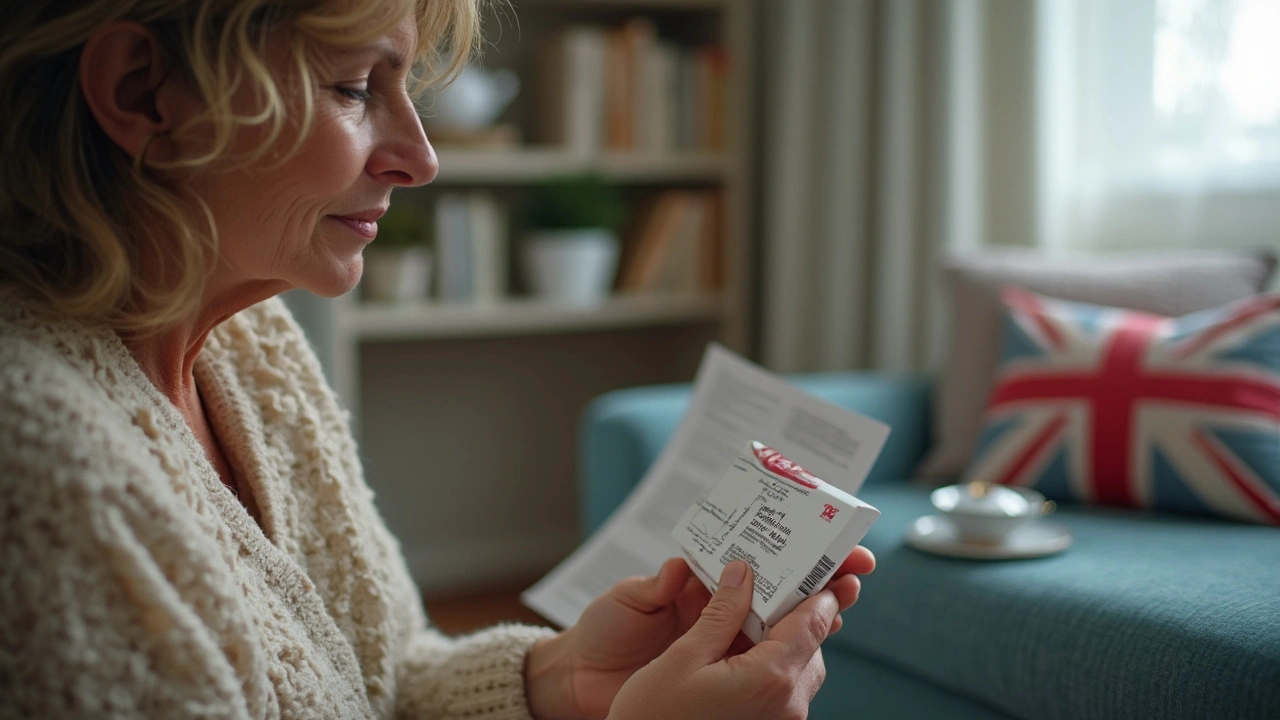Eye care: simple daily habits and safe medication tips
Screen time, dry air, and sun exposure add up. Small daily habits protect your vision and keep your eyes comfortable. Below are clear, practical steps you can start using today—even if you wear contacts or work at a computer all day.
Daily routines that actually help
Follow the 20-20-20 rule: every 20 minutes look at something 20 feet away for 20 seconds. That eases eye strain and reduces headaches from screens.
Blink on purpose. When you stare we blink less, which dries the surface of the eye. If your eyes feel gritty, use preservative-free artificial tears—one drop as needed.
Wear sunglasses with 100% UV protection outdoors. Long sun exposure raises risk for cataracts and surface damage. A wide-brim hat helps on bright days.
Keep contact lens hygiene simple: wash hands before handling lenses, replace solutions and cases regularly, and follow the wearing schedule your eye doctor gave you. If your eyes get red, painful, or blurry while wearing lenses, take them out and see a professional.
For eyelid irritation or crusting, a warm compress for 5–10 minutes and gentle lid massage can clear blocked glands. If it’s persistent or painful, check with an eye specialist.
When to see a doctor and how meds fit in
See an eye doctor right away for sudden vision loss, flashes of light, lots of new floaters, severe eye pain, or double vision. These can be signs of urgent problems that need quick treatment.
Common eye medicines include antibiotic drops (for infections), steroid drops or injections (for inflammation), and artificial tears (for dry eye). Some drugs like Ciprofloxacin (Ciplox) are available as eye drops; others such as triamcinolone may be used by specialists for certain retinal or inflammatory conditions. Never self-prescribe—wrong use can harm your vision.
Thinking of buying eye meds online? Read the seller’s licensing details, require a valid prescription, avoid prices that look too good to be true, and check shipping and return policies. Our guides about buying Ciplox and triamcinolone online explain what to watch for and how to stay safe when ordering prescriptions.
Steroid drops and injections can raise eye pressure and cause glaucoma if used improperly. Ask your doctor how long to use them and whether you need pressure checks while on treatment.
If you have migraine-related visual symptoms (like aura or temporary vision changes), mention them to your doctor—some migraine treatments can reduce attacks and protect vision from recurring issues.
Quick checklist you can use now:
• Set a 20-minute timer for screen breaks.
• Use preservative-free tears if eyes feel dry.
• Wear UV-blocking sunglasses outdoors.
• Keep contact lens routine strict and replace cases often.
• Seek immediate care for sudden vision changes.
Want practical reading? Check our posts about buying Ciplox safely, where to get triamcinolone, and our reviews of online pharmacies. These pieces walk you through safe ordering, red flags, and how to protect your eye health when medication is needed.

Eye Drops for Postoperative Inflammation: Essential Tips for Faster Healing
May 6, 2025, Posted by Mike Clayton
Eye drops play a huge role in controlling inflammation after eye surgery, yet they're often underestimated. This article breaks down exactly why these drops matter, how they work, and what can go wrong if you skip them. You'll also find real-life insights, expert advice, and practical ways to use eye drops for the best recovery. Whether you're prepping for surgery or helping someone through it, you'll learn everything you need to know about post-op eye care.
MORESEARCH HERE
Categories
TAGS
- treatment
- online pharmacy
- dietary supplement
- side effects
- health
- dietary supplements
- health benefits
- online pharmacy Australia
- medication adherence
- medication safety
- thyroid disorders
- treatment option
- calcipotriol
- blood pressure
- erectile dysfunction
- closer look
- optimal health
- sexual health
- bacterial infections
- nutrition
